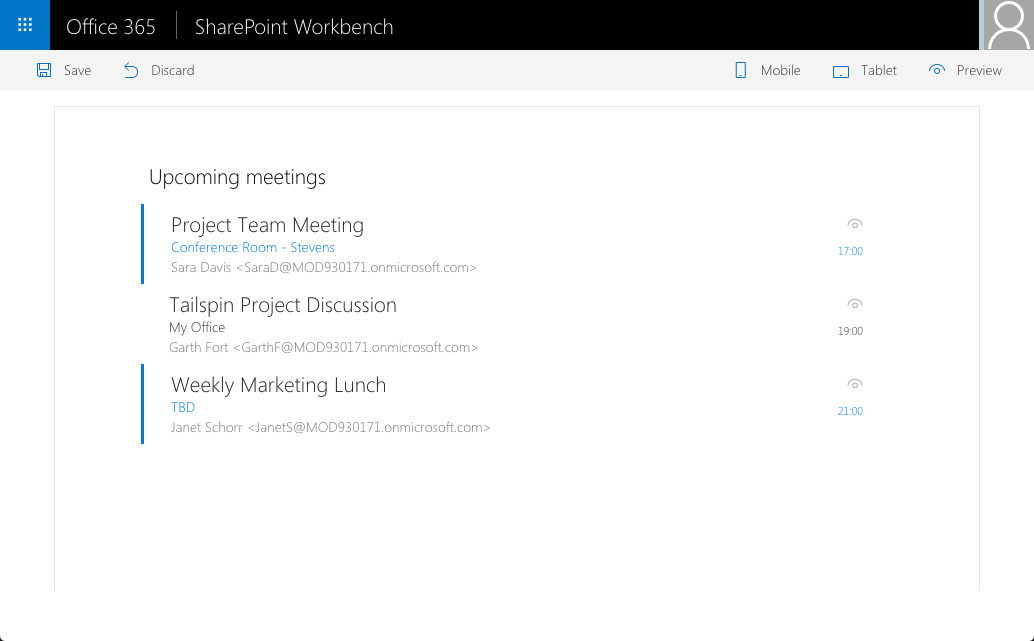3.1 KiB
3.1 KiB
Azure Active Directory implicit flow authentication samples
Summary
Sample SharePoint Framework web parts built using React illustrating different scenarios using implicit OAuth flow with Azure Active Directory.
Upcoming meetings
Sample SharePoint Framework client-side web part built using React showing upcoming meetings for the current user retrieved using the Microsoft Graph.
Used SharePoint Framework Version
Applies to
Solution
| Solution | Author(s) |
|---|---|
| react-aad-implicitflow | Waldek Mastykarz (MVP, Rencore, @waldekm) |
Version history
| Version | Date | Comments |
|---|---|---|
| 1.0.0 | September 22, 2016 | Initial release |
Disclaimer
THIS CODE IS PROVIDED AS IS WITHOUT WARRANTY OF ANY KIND, EITHER EXPRESS OR IMPLIED, INCLUDING ANY IMPLIED WARRANTIES OF FITNESS FOR A PARTICULAR PURPOSE, MERCHANTABILITY, OR NON-INFRINGEMENT.
Prerequisites
- Office 365 subscription with SharePoint Online and Exchange
- Site Collection created under the /sites/ Managed Path
Minimal Path to Awesome
- clone this repo
- in the command line execute:
npm igulp serve --nobrowser
- create a copy of the ./temp/workbench.html file and change its extension to .aspx
- upload the workbench.aspx file to a Document Library in your site
- copy the URL of the workbench page uploaded to your SharePoint site, ie. https://contoso.sharepoint.com/sites/my-team/documents/workbench.aspx
- in the Azure Active Directory corresponding to your Office 365 tenant register a new Web Application:
- as the Sign-on URL enter the URL of the workbench page uploaded to SharePoint
- enable OAuth implicit flow
- grant the application the Microsoft Graph/Read user calendars permission
- copy the application's ID
- in the command line stop the
gulp servetask - in the src/webparts/upcomingMeetings/AdalConfig.ts file in the clientId property enter the application ID registered in Azure
- in the command line execute
gulp serve --nobrowser
Features
Sample web part in this solution illustrates the following concepts on top of the SharePoint Framework:
- using React for building SharePoint Framework client-side web parts
- using Office UI Fabric React components for building user experience consistent with SharePoint and Office
- on-demand authentication with the Azure Active Directory using the ADAL JS library
- communicating with the Microsoft Graph using its REST API
- using the ADAL JS library with SharePoint Framework web parts built using React
- using custom Webpack loader for exposing pieces of non-AMD scripts
- passing web part properties to React components

